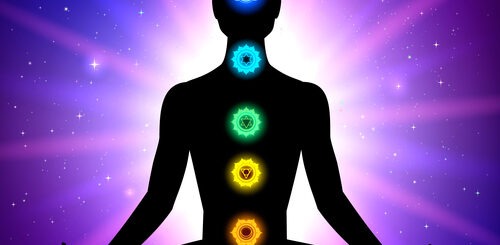Reiki Insights: Enhancing Mind, Body, and Spirit Alignment

Looking for more amazing products? Check out our online store and explore our collection here! Happy shopping!
Before diving in, please note: This post is for informational purposes only. If you’d like to know more about how we approach topics, feel free to check out our friendly Disclaimer Page.
Hey there, amazing readers! 
We’re committed to delivering quality posts, and your support (even just sticking around despite the ads) means everything to us. So, bear with us, and thanks for helping us keep the good vibes rolling. Now, on to the fun stuff!
TRANSLATE BUTTON AT THE END OF THE ARTICLE
Overview
Reiki is a holistic healing practice that aims to enhance the mind, body, and spirit alignment.
It is believed to have originated in Japan in the early 20th century and is based on the concept that a universal life force energy flows through all living beings.
Reiki practitioners channel this energy through their hands to promote healing and balance in the recipient.
This article will explore the history, principles, techniques, and benefits of Reiki, as well as its role as a complementary therapy and its potential for enhancing emotional well-being and physical healing.
What is Reiki and How Does it Work?
Reiki is a Japanese healing technique that uses the practitioner’s hands to transfer energy to the recipient.
The word "Reiki" is derived from two Japanese words: "rei," meaning universal, and "ki," meaning life force energy.
The practice is based on the belief that a person’s health and well-being depend on the balance of this life force energy.
During a Reiki session, the practitioner places their hands lightly on or just above the recipient’s body, allowing the energy to flow and facilitate healing.
It is believed that Reiki can help to restore harmony and balance in the mind, body, and spirit, promoting relaxation, reducing stress, and supporting overall well-being.
The History and Origins of Reiki
Reiki was developed by Mikao Usui, a Japanese Buddhist monk, in the early 20th century.
Usui embarked on a quest to understand how spiritual leaders, such as Buddha and Jesus, were able to heal others through touch.
After years of meditation, fasting, and study of ancient texts, Usui reportedly had a spiritual awakening and gained the ability to channel healing energy.
He passed on his teachings and techniques to his students, who eventually spread Reiki throughout Japan and beyond.
Today, Reiki is practiced worldwide and has evolved into various lineages and styles.
Key Principles and Beliefs of Reiki
Reiki is guided by a set of principles and beliefs that serve as a foundation for the practice.
These principles, known as the Five Reiki Principles or the Five Reiki Precepts, are:
Just for today, I will not be angry.
Just for today, I will not worry.
Just for today, I will be grateful.
Just for today, I will do my work honestly.
Just for today, I will be kind to every living thing.
These principles encourage practitioners to cultivate a mindset of positivity, gratitude, and compassion.
The belief system of Reiki also includes the concept that energy is not limited by time or space and that healing can occur on a physical, emotional, mental, and spiritual level.
Exploring the Benefits of Reiki Treatment
Reiki treatment offers numerous benefits for individuals seeking holistic healing and overall well-being.
Some of the key benefits of Reiki include:
Relaxation and stress reduction: Reiki promotes deep relaxation and helps to alleviate stress and anxiety.
It can induce a state of calmness and balance in the mind and body.
Release of energy blockages: Reiki is believed to clear energy blockages and restore the healthy flow of life force energy throughout the body.
This can enhance vitality and support the body’s natural healing processes.
Pain relief: Reiki has been reported to alleviate pain and discomfort, both chronic and acute.
It can be used in conjunction with conventional medical treatments to help manage pain and improve overall well-being.
Emotional healing: Reiki can support emotional healing by releasing negative emotions, promoting self-awareness, and fostering a sense of inner peace and harmony.
Improved sleep: Many individuals experience improved sleep quality after receiving Reiki treatment.
It can help to calm the mind, relax the body, and promote restful sleep.
Understanding the Chakra System in Reiki
In Reiki, the chakra system is an integral part of the healing process.
Chakras are energy centers located along the spine, and they are believed to correspond to different aspects of the mind, body, and spirit.
There are seven main chakras, each associated with specific qualities and functions.
During a Reiki session, practitioners may focus on balancing and clearing the chakras to promote overall well-being.
This can be done through various techniques, such as visualization, intention setting, and Reiki hand positions.
The seven main chakras in the Reiki system are:
Root Chakra (Muladhara): Located at the base of the spine, it is associated with stability, grounding, and sense of security.
Sacral Chakra (Svadhishthana): Located in the lower abdomen, it is associated with creativity, emotions, and sexuality.
Solar Plexus Chakra (Manipura): Located in the upper abdomen, it is associated with personal power, confidence, and self-esteem.
Heart Chakra (Anahata): Located in the center of the chest, it is associated with love, compassion, and emotional healing.
Throat Chakra (Vishuddha): Located in the throat, it is associated with self-expression, communication, and speaking one’s truth.
Third Eye Chakra (Ajna): Located between the eyebrows, it is associated with intuition, perception, and inner wisdom.
Crown Chakra (Sahasrara): Located at the top of the head, it is associated with spiritual connection, higher consciousness, and enlightenment.
Reiki Techniques and Hand Positions
Reiki practitioners use a variety of techniques and hand positions during a session to facilitate healing and balance.
The hand positions are based on the concept of energy flow and are intended to cover all major energy centers in the body.
The practitioner may place their hands directly on the recipient’s body or hold them slightly above, depending on the recipient’s comfort level and specific needs.
Some common hand positions include placing the hands on the head, neck, shoulders, chest, abdomen, and back.
The practitioner may also focus on specific areas of concern or use intuitive guidance to determine where to place their hands.
The Role of Intuition in Reiki Practice
Intuition plays a significant role in Reiki practice.
Practitioners rely on their intuition to guide them in the healing process and determine where to place their hands.
Intuition is the ability to access knowledge or insights without relying on logical reasoning or evidence.
In Reiki, practitioners cultivate their intuition through practice, meditation, and self-awareness.
By developing their intuition, practitioners can tap into a deeper level of understanding and connect with the recipient’s energy to provide the most effective healing experience.
Reiki as a Complementary Therapy
Reiki is often used as a complementary therapy alongside conventional medical treatments.
It can support the healing process and enhance overall well-being.
Reiki is non-invasive and does not interfere with medical treatments or medications.
It can be integrated into various healthcare settings, including hospitals, clinics, and wellness centers.
Many healthcare professionals, including doctors, nurses, and therapists, recognize the value of Reiki as a complementary therapy and may refer patients to Reiki practitioners to support their healing journey.
Enhancing Emotional Well-being with Reiki
Reiki is known for its ability to enhance emotional well-being.
Through the release of energy blockages and the promotion of relaxation and balance, Reiki can help individuals process and release negative emotions.
It can support emotional healing and foster a sense of inner peace and harmony.
Reiki sessions can create a safe and nurturing space for individuals to explore their emotions and gain clarity and insight.
By balancing the energy centers in the body, Reiki can also help to align the mind, body, and spirit, promoting overall emotional well-being.
Reiki and Physical Healing: What to Expect
Reiki has been reported to support physical healing by promoting relaxation, reducing stress, and improving the body’s natural healing processes.
During a Reiki session, individuals may experience sensations such as warmth, tingling, or deep relaxation.
Some individuals may also experience a release of pent-up emotions, physical tension, or pain.
It is important to note that the effects of Reiki can vary from person to person, and multiple sessions may be needed to achieve the desired results.
Reiki is not a substitute for medical treatment, but it can complement and support the body’s healing process.
Incorporating Reiki into Daily Life
Reiki can be incorporated into daily life to support overall well-being and promote a sense of balance and harmony.
Some ways to incorporate Reiki into daily life include:
Self-treatment: Practicing self-Reiki regularly can help to maintain balance and harmony in the mind, body, and spirit.
This can be done through self-hand placements or by visualizing Reiki energy flowing through the body.
Meditation and mindfulness: Reiki can be combined with meditation and mindfulness practices to deepen relaxation and promote self-awareness.
This can involve focusing on the breath, visualizations, or repeating positive affirmations.
Energy cleansing: Using Reiki symbols and techniques, individuals can cleanse their energy fields and release any negative or stagnant energy.
This can be done by visualizing the energy being cleared or by using specific hand positions.
Setting intentions: Intention setting is a powerful practice that can be combined with Reiki to manifest desired outcomes and promote positive change.
By setting clear and focused intentions, individuals can align their energy with their goals and aspirations.
Conclusion
Reiki offers a holistic approach to healing and well-being, enhancing the mind, body, and spirit alignment.
With its origins in Japan, Reiki has gained popularity worldwide as a complementary therapy that supports relaxation, stress reduction, emotional healing, and physical well-being.
Practitioners use various techniques and hand positions to channel energy and promote balance and harmony in the recipient.
The chakra system is an integral part of Reiki, and practitioners focus on balancing and clearing the energy centers to support overall well-being.
Reiki can be incorporated into daily life through self-treatment, meditation, energy cleansing, and intention setting, providing individuals with a powerful tool for self-care and personal growth.

The Enlightenment Journey is a remarkable collection of writings authored by a distinguished group of experts in the fields of spirituality, new age, and esoteric knowledge.
This anthology features a diverse assembly of well-experienced authors who bring their profound insights and credible perspectives to the forefront.
Each contributor possesses a wealth of knowledge and wisdom, making them authorities in their respective domains.
Together, they offer readers a transformative journey into the realms of spiritual growth, self-discovery, and esoteric enlightenment.
The Enlightenment Journey is a testament to the collective expertise of these luminaries, providing readers with a rich tapestry of ideas and information to illuminate their spiritual path.
Our Diverse Expertise
While our primary focus is on spirituality and esotericism, we are equally passionate about exploring a wide range of other topics and niches 

To ensure we provide the most accurate and valuable insights, we collaborate with trusted experts in their respective domains 
Our blog originally focused on spirituality and metaphysics, but we’ve since expanded to cover a wide range of niches. Don’t worry—we continue to publish a lot of articles on spirituality! Frequently visit our blog to explore our diverse content and stay tuned for more insightful reads.
Hey there, amazing reader! 
Check out our store here and take a peek at some of our featured products below! Thanks for being awesome!











